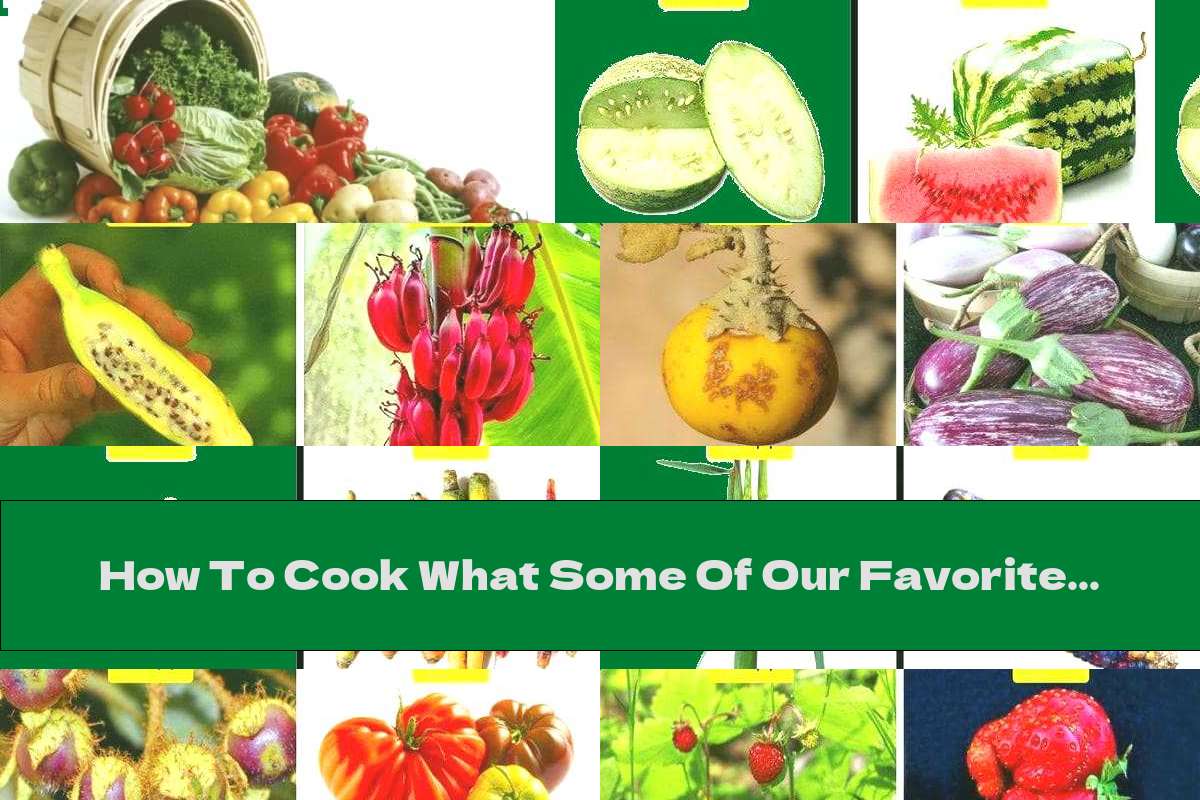How To Cook What Some Of Our Favorite Foods Looked Like Before They Were Cultivated - Recipe
 Author: Marko Balašević
Time for reading: ~2
minutes
Last Updated:
August 08, 2022
Author: Marko Balašević
Time for reading: ~2
minutes
Last Updated:
August 08, 2022

Learn how to cook "What some of our favorite foods looked like before they were cultivated". Delicious recipe.
We know that most domestic animals are domesticated, but what happened to the plants? Selective reproduction for hundreds of years changes the food we eat. The use of genetic engineering for this purpose raises many questions. Here we present what some plants looked like thousands of years ago, long before humans began to cultivate them, as well as their modern descendants.
Melon
Wild watermelon, the predecessor of modern, is a desert plant. Its core is a thick white and extremely bitter pulp. The Bedouins claim that bread can be made from this type of fruit, and oil is extracted from the seeds, which is used in the production of soap and medicine.
Banana
The banana is an example of an early cultivated plant. Wild fruits have quite hard seeds and are up to 5 millimeters in diameter. Millions of people in developing countries know only one variety of green banana (plantain), which they use for cooking. They can be fried, baked or cooked. They can even be used to make banana beer or banana wine.
Eggplant
The original eggplant is actually a weed that is toxic to animals. Modern ones are usually purple in color, but there are also white oval varieties that really look like an egg (in English the literal translation of the word eggplant, eggplant, is an egg plant).
Carrots
Wild carrots were originally cultivated for their leaves and were considered a useful weed. They attract wasps and butterflies and increase the production of tomatoes, which are usually planted near them. The orange carrots we are used to seeing today did not appear in the Netherlands until the 17th century.
Corn
Prior to cultivation, corn was 2.5 centimeters in size and had only one cob per plant. Although we now usually only see classic yellow cobs in the markets, there are many beautiful multicolored varieties that look more like glass beads than corn kernels.
Tomato
Tomatoes change their appearance, size and taste after being cultivated, but some primitive peoples continue to consume them in their original form, as they are a good source of potassium and vitamin C. When Columbus imported them to Europe from America, medieval Europeans they believe that the fruits are poisonous and grow them as an ornamental plant.
Berry
The wild strawberry is small and has a delicate aroma that is lost during the years of cultivation. Look at this elephant-shaped strawberry, it is very cute, but not as fragrant as its wild cousin.
Potatoes
Just look at these different shaped and sized potatoes. In our country we adhere mainly to one species, and the rest are largely unknown to us. Fortunately, there are some organizations in South America that not only support a wide variety of species, but also work to promote them around the world. So who knows, maybe one day we will see them in our markets.
- How to prepare and store freshly squeezed juices
- The poisonous fruits and vegetables we consume every day - Part One
- Some tips on how to prepare tastier fruit and vegetable salads
- The poisonous fruits and vegetables we consume every day - Part Two
Related Articles
- The Ultimate Guide to 123 in Nutrition: Benefits, Recipes, and More
- The Ultimate Guide to 123 in Nutrition: Benefits, Recipes, and More
- The Power of Beta-Carotene for Former Smokers: Benefits and Best Foods
- Exploring the Role of E330 (Citric Acid) in Nutrition and Recipes
- The Ultimate Guide to Boiled Cod: Health Benefits, Nutrients, and Recipes